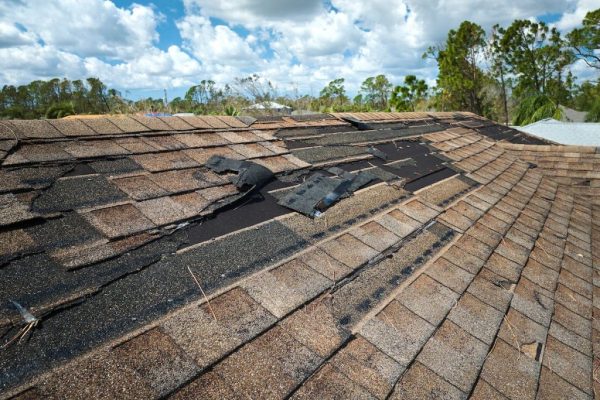“good homeis a bi-weekly sponsored column published in association with PuroClean by Wilton | Ridgefield around Home security, maintenance, weather preparation, And loss prevention, aiming to save homeowners the hassle and headache of serious property damage. Located in South Wilton (24 Danbury Rd., Suite 204), PuroClean provides 24-hour water damage restoration, fire and smoke restoration, mold and biohazard remediation services to the community of Fairfield County and throughout Southwest Connecticut and Northeast Westchester County .
Water damage is a fate that most homeowners suffer, and it can range from minor discoloration to major structural damage. It can be difficult to determine how long the problem has existed because some signs of a problem are not immediately apparent. In areas like ours, Fairfield and Westchester Counties, where we are hit by hurricanes, snowstorms and often torrential rains. We are no strangers to water penetrating through our building envelope.
If you suspect that your home may have suffered water damage, it is important to inspect the damage to determine when it occurred so appropriate action can be taken. Even the smallest mishap can affect your home. We’ve put together the following information to help you understand possible causes and what to monitor if you spot an error.
What is water damage?
Water damage is damage to a property or its contents caused by water ingress. When water gets indoors, the culprits are leaks, flooding, burst pipes and heavy rainfall. Permanently standing water can also cause damage. It can affect numerous surfaces and materials, including walls, floors, ceilings, furniture, and electronics.
Water damage can be divided into three categories:
- category 1 refers to clean water that poses no health risk to humans. Water from a broken utility line or appliance is classified in this category.
- category 2 refers to gray water that contains pollutants that can cause illness if ingested. This can include water from washing machines, dishwashers or toilet overflows.
- category 3 refers to black water that contains highly contaminated and hazardous substances such as sewage and can cause serious illness or death if ingested. Floods or water from sewage backwater fall into this category.
What are the possible causes of water damage?
Due to its multiple ways of causing structural damage, water damage is one of the most common and destructive problems faced by homeowners and property managers. It can also lead to serious health risks if left untreated. There are several possible causes of damage that homeowners and property managers should keep in mind.
- Plumbing issues: The most common cause of water damage is plumbing problems. Leaking pipes, broken water lines, or broken appliances like water heaters, washing machines, and dishwashers can all malfunction and cause water-related problems. A small leak can cause significant water damage if left untreated, as water can seep into the walls and floors, leading to mold growth and compromising a property’s structural integrity.
- natural disasters: Natural disasters such as hurricanes, floods and heavy rains can cause serious damage. Heavy rains can cause flooding and hurricanes often bring storm surges that can affect property. In addition, floods contain harmful pollutants and pollutants that are dangerous to human health.
A natural disaster like a hurricane can cause damage to the roof and allow water to enter the home. Credit: contributed / PuroClean by Wilton | Ridgefield
- Faulty roof covering: Leaks in the roof are another common cause of water damage. If your roof is missing or broken shingles or tiles, or if the roof around the chimney needs repairing, water can seep into the attic and affect the ceiling, walls, and floor.
- HVAC systems: Another cause is heating, ventilation, and air conditioning (HVAC) equipment such as refrigerators and heaters. If they are not working properly, a unit’s condensation line can become clogged and allow water to flow into the property. A leaking or broken heater in the attic or basement can be of particular concern as the water damage directly affects the interior of the property.
 A clogged HVAC system can lead to leaks and eventual damage. Credit: contributed / PuroClean by Wilton | Ridgefield
A clogged HVAC system can lead to leaks and eventual damage. Credit: contributed / PuroClean by Wilton | Ridgefield
- Device malfunction: Broken appliances like fridges and freezers can get soaked. Water lines connected to these devices can leak or break, damaging floors and walls.
- Clogged gutters: When gutters become clogged, they can no longer support the weight of the water they are designed to hold. The overflow can reach the roof and damage ceilings, walls and floors.
- Human error: We’re not always perfect. Forgetting to turn off the faucet or leave the bathroom while filling your bathtub can potentially lead to water damage.
By knowing the possible causes and taking preventative measures, homeowners and property managers can minimize the risk of a disaster. Regular maintenance ensures that all plumbing systems are working properly and HVAC equipment is well maintained.
How to tell if water damage is new or old
It is often difficult to locate water damage, especially if it is older and has had time to dry. One of the most important steps in coping is determining the age of the water damage. Here are some tips on how to tell if water damage is new or old.
- Study the history of the house and its building materials: Different types of materials interact with water damage in different ways. For example, thick paint and tile retain water more efficiently than thin ones. Even the slightest amount of water can damage these materials instantly. Knowing what your home is made of is helpful because water affects certain building materials differently. For example, if your property has tile, brick, or some other hard substance and shows signs of water damage, chances are the damage has been there for some time.
- Conduct a mold inspection: Mold growth may increase in areas affected by water damage. If mold is growing in a water-damaged area, it’s likely old water damage. However, if you see water damage but no mold, that could be a sign it’s new damage. Spotting mold at the site of water damage means the damage is at least two to three days old and didn’t just happen overnight. You won’t want to touch it now; Instead, call a professional mold remediation company to determine if the mold has spread elsewhere.
 Older water damage can cause rings to appear on the ceiling. Credit: contributed / PuroClean by Wilton | Ridgefield
Older water damage can cause rings to appear on the ceiling. Credit: contributed / PuroClean by Wilton | Ridgefield
- Look for water rings and water stains: A dark spot or stain on the ceiling or walls indicates freshness, while older water damage can create rings on the wall or ceiling. The more rings there are, the older the water damage. When the circles change color, it can indicate whether the water is wet, dry, or has been there for a long time. Rings are most common where the water leaks only occasionally, such as a spot under a roof leak that only gets wet when it rains.
- Look for warping: Water may cause materials to warp, swell, or kink. If your wood floors, walls, or ceiling are starting to look misshapen, the water damage is probably old. New water damage may not have had enough time to cause deformation. Therefore, if everything appears to be in good condition, the damage may be new.
 Dented wood floors are a sign of old water damage. Credit: contributed / PuroClean by Wilton | Ridgefield
Dented wood floors are a sign of old water damage. Credit: contributed / PuroClean by Wilton | Ridgefield
- Smell musty odors: Water damage can sometimes create a distinct odor that lingers in the air. If you notice a musty smell in an area that has had water damage, the damage is probably old. However, if there is no unpleasant odor, it may mean that the damage is new.
- Check for rust: Water causes metal objects to disintegrate over time. If you spot traces of rust on metals in a water damaged area, it’s likely old water damage. Recent water damage may not have had enough time to cause rust.
 Rust can be an indication that water damage has affected metal objects. Credit: contributed / PuroClean by Wilton | Ridgefield
Rust can be an indication that water damage has affected metal objects. Credit: contributed / PuroClean by Wilton | Ridgefield
- Touch to determine softness: Water causes materials to become soft or mushy. Water damage is likely new if a wall or ceiling feels soft. The water damage may be old if everything feels solid and in good condition. Older water damage leaves a soggy and soggy feeling.
- Check for watermarks and expiration: Watermarks can be a good indicator of whether water damage is recent or old. Freshwater damage is likely to have a prominent, still-wet watermark. Old water damage may have a watermark, but it’s likely dry and faded. Signs of deterioration often mean that your property has been exposed to water for an extended period of time. Typically, deterioration occurs only in extreme situations such as flooding. If you notice any deterioration, don’t hesitate to take action.
Determining whether water damage is recent or old is crucial when troubleshooting the problem. By examining the affected materials and looking for signs of discoloration, mold, warping, musty smells, rust, softness, and water stains, you can get a good idea of how long the water damage has been going on. Due to the property and health risks, contacting a professional water damage restoration company will ensure that the problem is dealt with promptly and efficiently.
Contact PuroClean from Wilton | Ridgefield Today for professional water damage restoration
If your home or commercial property has experienced water damage and you need expert help, contact PuroClean today. Our licensed professionals specialize in water damage restoration and will work with you to quickly and safely restore your home or business to its pre-damage condition. We use advanced equipment, techniques and products to target all water affected areas.
We restore your property to the condition it was in before it was lost, with minimal disruption to your everyday life. If you are dealing with water damage, find us on LinkedIn, Facebook or Instagram. Call us at 475.277.2400; or send us an email.
For more related GMW stories see…
goodmorningwilton.com
https://goodmorningwilton.com/good-home-how-to-tell-if-water-damage-is-new-or-old/















